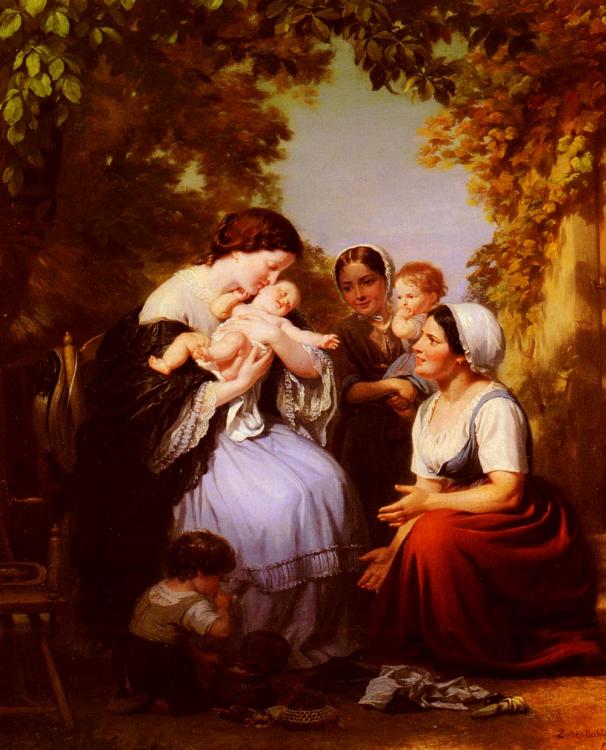My youngest is now a senior in high school, and I plan
on enjoying every second of it! I confess, I experienced a sort of midlife crisis
last year, as I realized my children soon will have all flown the nest. For a
few months, I felt weighed down by an undefined sadness. I missed the days when
my children needed me - even while remembering those moments when I had felt
overwhelmed by the sense of always being needed.
I started to panic about the fact that I have yet to
publish a novel – something I would like to do before she goes to college. A children’s
fantasy novel I had been working on for seven years had been rejected shortly
after my fiftieth birthday. I received positive feedback, but the nature of the
changes the editor was asking for would require going back to the drawing
board, something I just did not have the heart to do at the time. So, I decided
to shelve it for a while and work on some short stories. Around the new year, a
sudden sense of urgency welled up within me. I felt as if, if I failed to
publish a book, I would literally die.
“I know God gave me a gift of writing, and I know I
was called to write ‘Theresa and the Diamond Castle’ (inspired by St.
Therese’s ‘Interior Castle’), I said to a friend. “So why would he have
me work on it for seven years, if it wasn’t meant to go out into the world?”
She replied, “Maybe it’s all about the process.” Yes,
I do believe the process is what life is all about, but I still feel that my
light should be up on a hill, not covered by a bushel.
After a few children’s book manuscripts were rejected,
I decided to try my hand at a romance novel. I found a specific ‘inspirational
romance’ line that asked for Christian characters, preferably living in a small
town, with a focus on the development of the couple’s relationship. This seemed
like the perfect exercise following the rejection of Theresa. You see, I had
written that book without an outline, following wherever my mind took me, so
that once I had written 45,000 words, it became extremely cumbersome to weave
together into one cohesive narrative.
Romance is written following a specific format of ‘beats’:
boy meets girl, there are obstacles to their relationship, they overcome them,
and the book ends with the promise of a happily-ever-after. I started to
outline the book, then wrote the first few chapters. I soon found that my heroine
came alive to me – like when I had been writing about Theresa, I thought of her
day and night. Interestingly, as her sister’s character developed, I started to
think about a future romance centered on her. I had calculated that by writing
500 words per day, I could have the book finished within three months. By
February, I was indeed half done, but then life got in the way. Family visited.
My son graduated college and moved to Texas. There were family illnesses. I had
to let the book go until June.
In August, I was almost done, when I found two
critique partners. Chapter by chapter, we helped each other to fine tune our
manuscripts. But this process was too slow for me. I had set my birthday as my
deadline, and I wanted to get onto the next book. I submitted the book and
started on the next one.
As the publisher asked for a website, I gave them this
blog address, then realized how long it had been since my last post. Adding
some more content was another task to add onto my growing list.
Within a week of my submission, I received a rejection
– with positive feedback. It is a plot problem, and it is something I can fix
without fundamentally changing my characters. With my critique partners’ help,
I am feeling optimistic that I will have a much-improved manuscript to submit by
Christmas.
My days have been flying by. My daughter leaves for
school, and I am busy writing, exercising, doing stuff around the house, then
all of a sudden, she is home. Busy with my own endeavors, I can enjoy the time
she wants to spend with me, without smothering her. I watch with pleasure as
she enjoys her senior year. I look forward to what comes next for her – and for
me and my husband. I truly do not know what comes next, but there are dreams,
possibilities, options.
Echoing Ecclesiastes, my father used to say that we
all experience different seasons throughout our lives. At the time, I was in
the heart of motherhood, homeschooling three little ones with another on the
way, and every moment was devoted to caring for them. Like summer cooling into
fall, that season is drawing to its close. The leaves are falling off the trees,
but the spring will bring new ones, with blossoms. In the meantime, I can enjoy
the beautiful transformation as the leaves change color and drift away, some
closer and some farther, as the wind may blow.
Ecclesiastes 3, selected verses (New
American Standard Bible)
3 There is an appointed time for
everything. And there is a time for every matter under heaven—
9 What benefit is there for the worker
from that in which he labors? 10 I have seen the task which God has given the
sons of mankind with which to occupy themselves.
11 He has made everything appropriate in
its time. He has also set eternity in their heart, without the possibility that
mankind will find out the work which God has done from the beginning even to
the end.
12 I know that there is nothing better for
them than to rejoice and to do good in one’s lifetime; 13 moreover, that every
person who eats and drinks sees good in all his labor—this is the gift of God.
22 I have seen that nothing is better than
when a person is happy in his activities, for that is his lot. For who will
bring him to see what will occur after him?







.jpg)














